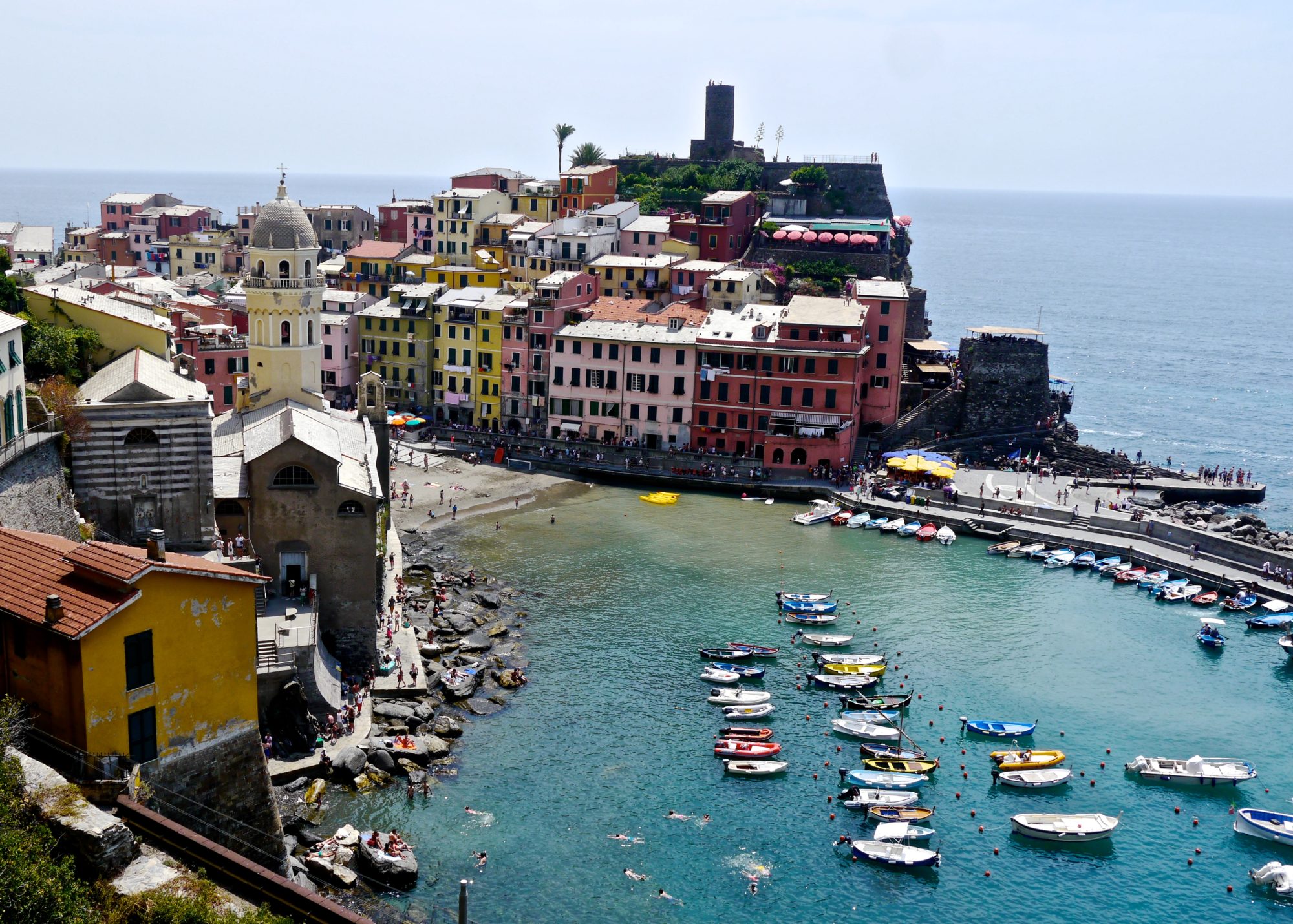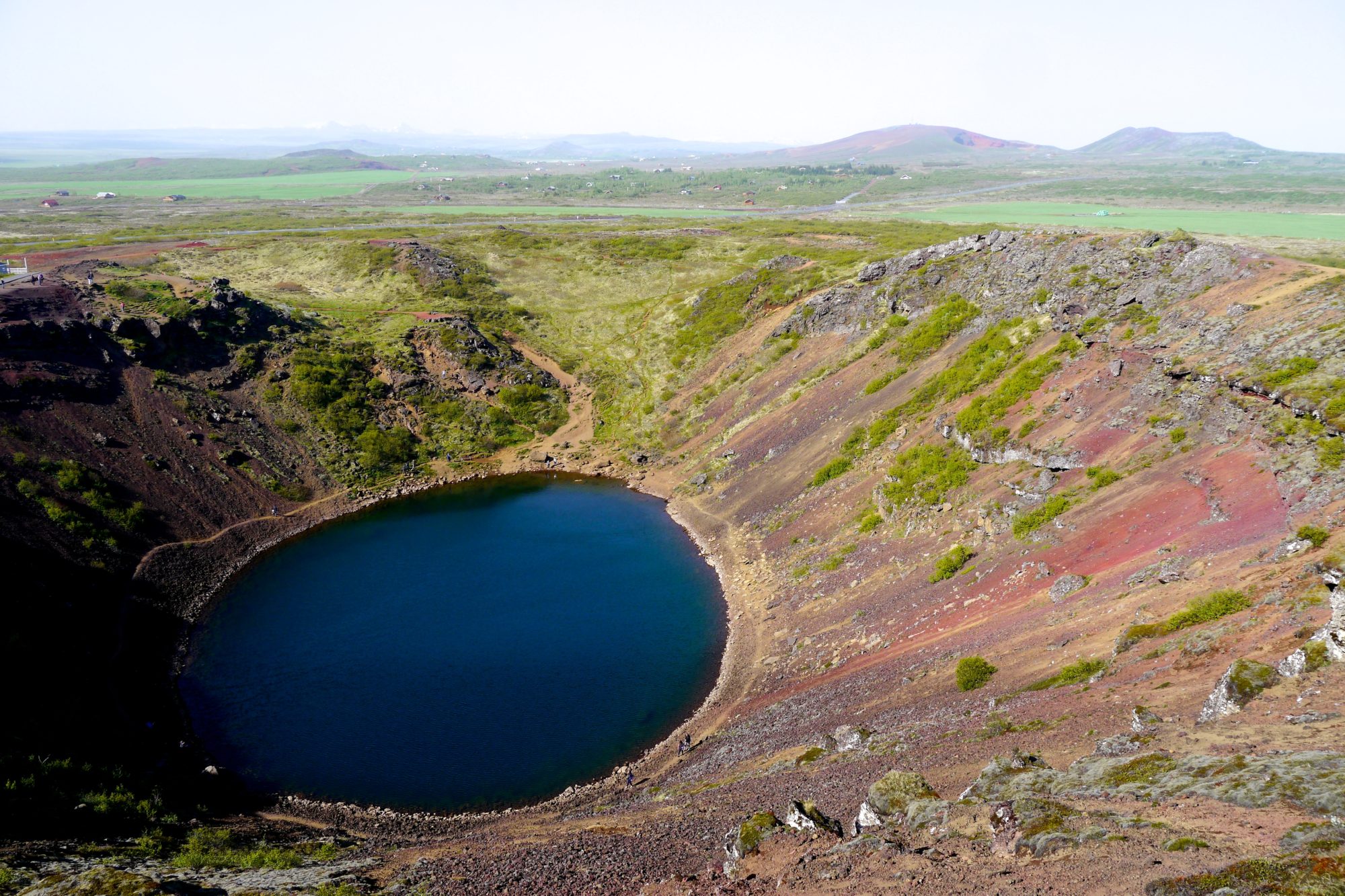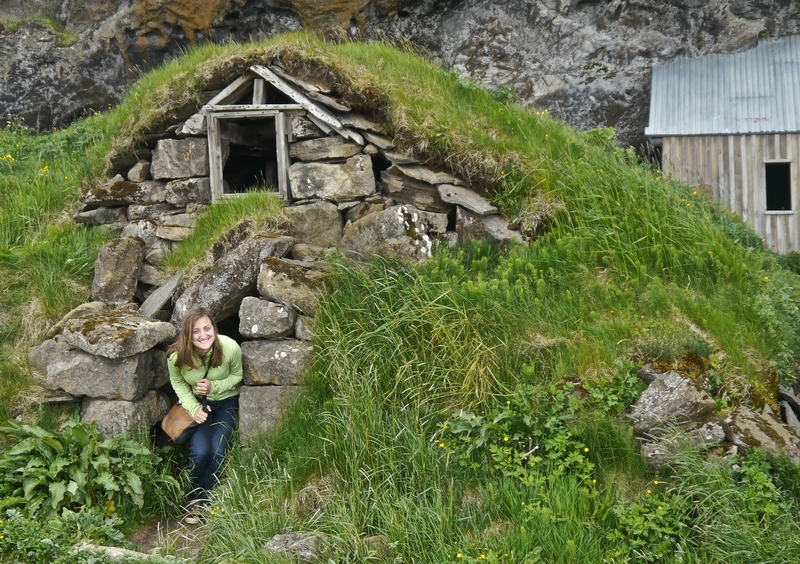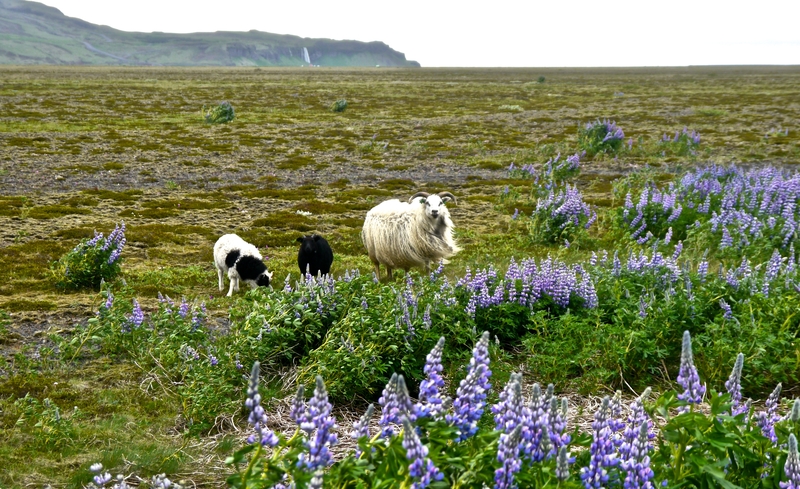
The South Coast of Iceland: Highlights and Attractions
The South Coast of Iceland is something out of a fairy tale. With its lush vegetation, its fields of purple lupins, its black sand beaches and its misty waterfalls, its spectacular landscapes are a photographer’s dream. Both familiar and otherworldly, Iceland’s coastal landscape at times reminded me of my home in the beautiful Pacific Northwest. And yet other times, I was convinced that I had just set foot on the moon. The area is desolate and treeless, yet also grassy and green—giving it the unique position of looking both lush and lunar, verdant and unforgiving, fertile and inhospitable.
I visited the South Coast of Iceland with the flight attendants I had met on my flight to Reykjavik, Brian and Jay. I had originally intended on joining a bus tour of the area, but since we had such a rewarding drive along the country’s Golden Circle the previous day, we decided to keep the car and explore the country’s southern coast together.
THE SOUTHERN COAST OF ICELAND
Along with the Golden Circle and the Blue Lagoon, the South Coast is one of the top tourist attractions in Iceland. Part of the infamous Ring Road that circles the entire island, the rugged coastline is among the best road trip destinations in Europe.
The area’s raw and untamed landscapes are covered in a blanket of greenery, sprinkled with colorful wildflowers and dotted with wild horses and sheep.
Typical tours of the Iceland’s South Coast begin in Reykjavik and stop at the dramatic waterfalls of Seljelandsfoss and Skogafoss. Then, they continue to the black sand beaches of Vik and the iceberg-studded Jokulsarlon Lagoon.
We didn’t have the opportunity to travel as far as the lagoon on our self-guided tour of the South Coast. The weather conditions past Vik simply didn’t permit us to finish the drive.
SELJELANDSFOSS WATERFALL
The first stop on our South Coast itinerary, was the thundering Seljelandsfoss Waterfall.
Seljalandsfoss drops 60 meters from the top of a long cliff face and is famous for having a footpath that enables travelers to view the cascading water from behind. Seljalandsfoss is beautiful and imposing. Even before reaching the waterfall, we could see it from the road–cascading down the cliffs that towered above the flat, fertile plains.
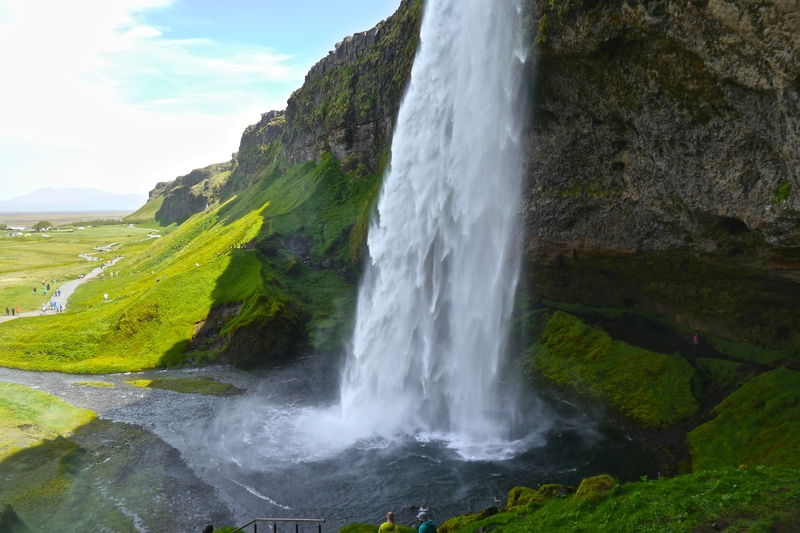
We were lucky that, as we visited the falls, the sun had decided to peak out from behind the clouds and bask us in rare, Icelandic sunlight. In the warmth of the sun, we spent time taking in the sights of the Seljelandsfoss and snapping pictures of its falling water. We walked behind the waterfall and then 360 degrees around it. Then, we scrambled up the side of the mountain, making our way up to the top in order to see splendid views of the ocean and nearby plains.
Seljalandsfoss is one of many cascades that tumble down the coastal cliffs. Within a five minute walk, we must have passed at least four or five waterfalls. Some pummeled down the mountainside with force. Others were merely trickles of water running like tears down the face of the rock wall.
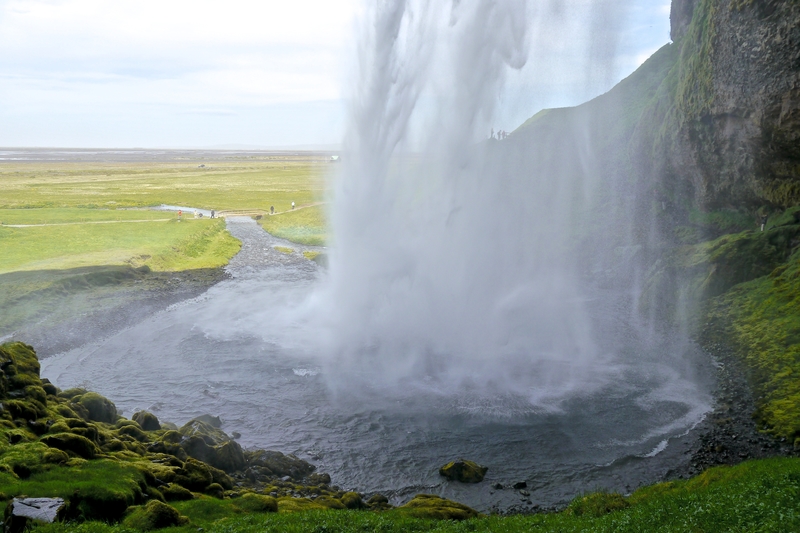
From Sjelandsfoss, we drove toward Skogafoss–another of Iceland’s famous and oft-photographed waterfalls.
SKOGAFOSS WATERFALL
We reached Skogafoss around midday. Standing 60 meters tall and 25 meters wide, Skogafoss is one of the largest and most impressive waterfalls in Iceland. Steps leading up the mountainside to the top of the falls, provided us with breathtaking views of the surrounding scenery. To the South, we could see flat plains fade into the ocean. To the North, a river wound its way up the treeless mountains toward an icefield. To the East and West, we saw endless rugged terrain sculpted by Iceland’s unique climate and geology.
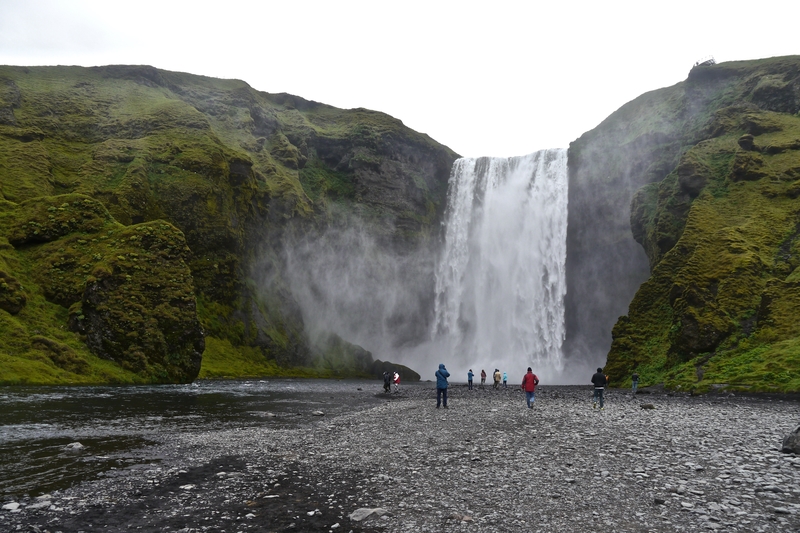
While we expected Skogafoss to be beautiful, we were not prepared for the area’s rugged surroundings. We must have spent the next three to four hours climbing to the top of the waterfall, soaking in the views of the ocean from above and hiking the riverside trail toward one of Iceland’s stunning glaciers. We followed the river upstream. At every bend, new waterfalls and mountains came into view. And every time we saw these new waterfalls and mountains, we questioned how each bend could produce views more stunning than the last.
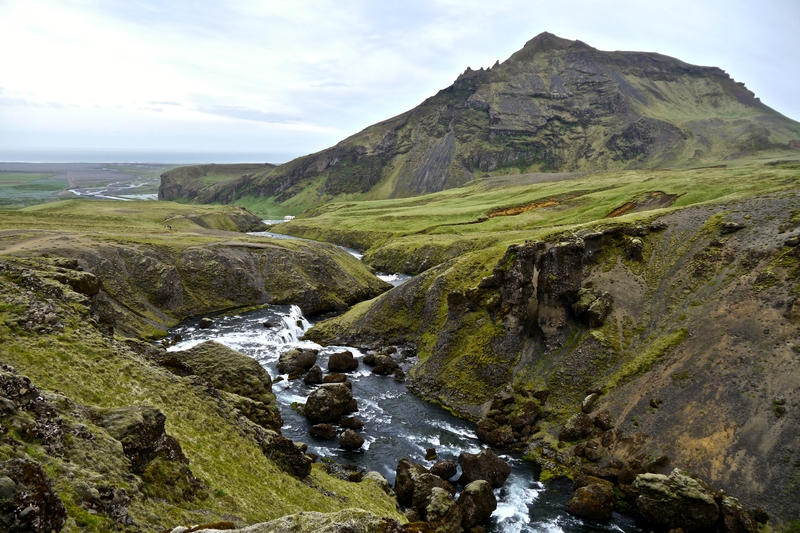
After a few hours of hiking upstream, scrambling over rocks and mingling with furry sheep, my companions and I agreed that it was time to turn back to the car and finish our drive toward Vik.
As soon as we crossed the next mountain pass, however, the relative good weather gave way to grey skies, cold winds and biting rain.
BLACK SAND BEACHES OF VIK
I could tell that Vik is a charming town and that its setting—on the shores of a black sand beach, surrounded by lupins and amongst towering cliffs—is nothing short of magical. But I could also tell that trying to convince my new friends to walk on the beach and admire the scenery would be not only futile, but downright silly. The weather was so menacing that turning back toward Reykjavik and away from the rain was our only viable option.
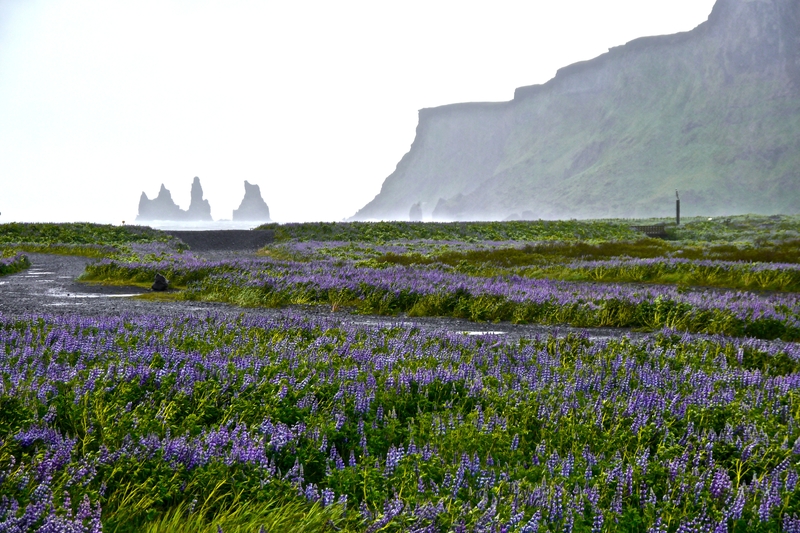
Since we still had many hours of daylight and since the weather conditions improved significantly the farther we drove from Vik, we decided to prolong our return and venture down one of the unpaved roads near Seljelandsfoss. In doing so, we passed by Gluggafoss—another beautiful waterfall that Jay had remembered seeing a few years back on a trip he took to Iceland with friends.
GLUGGAFOSS WATERFALL
There was nobody else at the Gluggafoss Waterfall when we visited. It was just us, the bleating sheep, the splendid views and the gushing water.
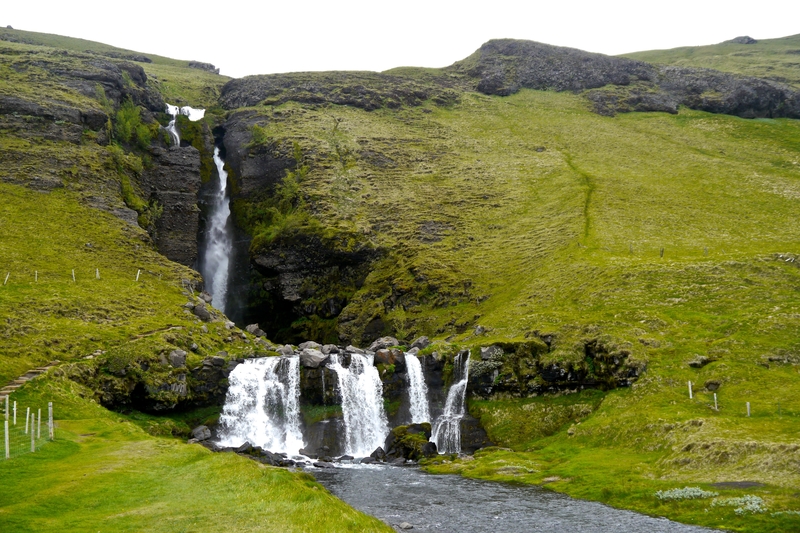
I marveled at how, in a country that sees over one million tourists a year, it was so easy to find solitude and peace. We were only a few miles form Sjelandsfoss and its busloads of tourists. In fact, I could see its shield of water tumbling off the cliff in the distance. Yet, until two other travelers scrambled over the rocks of the falls and into view, it felt as though we were a world away from anyone else.
****
The South Coast road trip provides travelers with a glimpse into Iceland’s best offerings. Along the drive, we passed galloping Icelandic horses, picturesque farms and herds of wooly sheep. With every mile along the road, it seemed that we were stepping further and further into the pages of a nordic fable.
I half expected elves or fairies or hobbits to emerge from the tiny, grassy-roofed homes that dot the countryside.
This surreal and untamed beauty is what Iceland was all about, we agreed. This wild scenery. This feeling of solitude. This escape from the hectic pace of city life. In the heat of summer flying, being amidst Iceland’s raw nature was exactly what I had been craving.
And it was just the medicine I needed in order to prepare myself mentally for the second half of summer.
_______________
Did You Enjoy this Post on Iceland’s Southern Coast? Pin It!
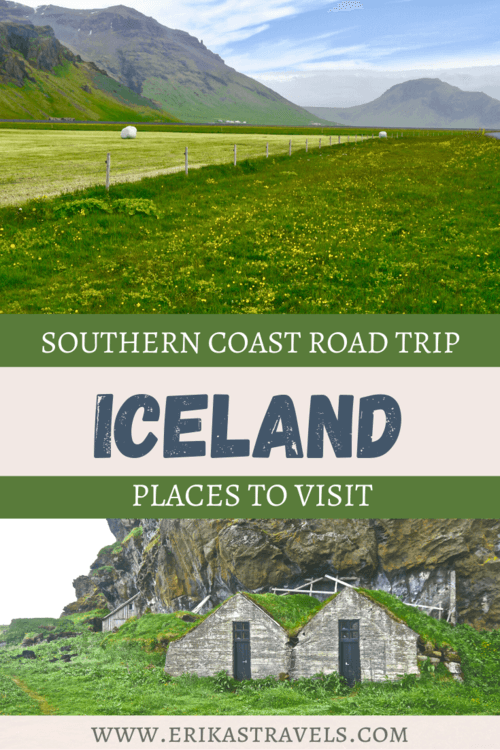
_
Additional Information on Traveling the South Coast of Iceland
- Travelers who can dedicate more than one day to Iceland’s South Coast, might want to take a look at Jamie’s four day itinerary for southern Iceland.
- Visiting Iceland is expensive. Check out Will’s blog for a comprehensive guide to visiting Iceland on a budget.
